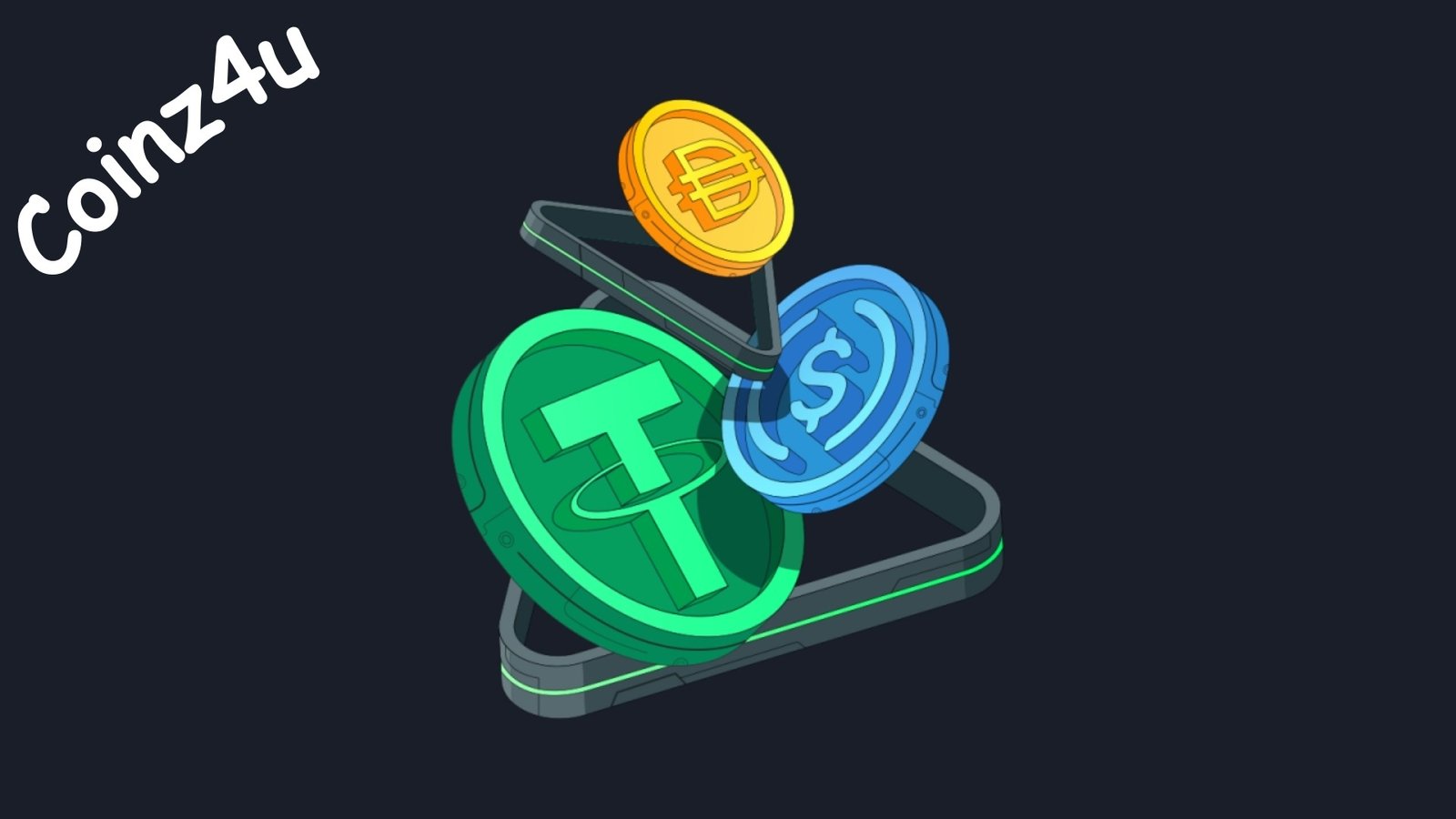Types of Bitcoin ETFs: An Ultimate Guide By Coinz4u

Types of Bitcoin ETFs: An Ultimate Guide By Coinz4u. Spot Bitcoin ETFs (worth $57,068 BTC) have been officially approved for listing by the US Securities and Exchange Commission. Following the SEC’s rejection of the first application in 2013, the Bitcoin ETF acceptance announcement marks the end of a ten-year quest to have Bitcoin ETFs acknowledged.
However, an exchange-traded fund dedicated to Bitcoin—what exactly is it? You can invest in Bitcoin through a Bitcoin ETF, just like any other exchange-traded fund (ETF), but you won’t own any. The hassle of secure storing won’t be an issue for users. To help readers better comprehend ETF variants, this article looks at the many Bitcoin ETFs available for investment. This article from Coinz4u breaks out the many Bitcoin ETFs that investors can choose from.
Different Types of Bitcoin ETFs
On the market, you may find a wide variety of Bitcoin ETFs. For those considering Bitcoin ETF as one of several investing options, it is essential to know the benefits and drawbacks of each form.
Physical Bitcoin ETF
Investors can gain exposure to Bitcoin through a physical Bitcoin ETF, a form of direct ownership. This exchange-traded fund (ETF) investment option takes care of storage issues, giving people who want a clear framework for their Bitcoin investments a more straightforward way to invest.
One major perk of physical Bitcoin ETFs is that the issuer owns and keeps it in physical custody. Nevertheless, investors must be mindful of the expense of storing the actual asset and the potential compromise of their privacy. Expense ratios for physical ETFs can be anywhere from 0.24 to 1.5 percent.
Spot Bitcoin ETFs
The investment vehicle that holds investors’ Bitcoins keeps tabs on the cryptocurrency’s worth and links it to its current market price. The ability to buy and sell based on real-time prices exposes investors to Bitcoin. In addition, unlike Bitcoin futures ETFs, it provides a new angle from which to trade ETFs.
Nevertheless, spot Bitcoin ETFs are directly affected by the market’s intrinsic volatility. To successfully handle possible volatility and abrupt price adjustments, one must embrace a strategic approach when confronted with such uncertainty. These investors may also incur brokerage commissions and management fees. Many companies have introduced Bitcoin exchange-traded funds (ETFs), including BlackRock, WisdomTree, and Valkyrie.
Futures-based Bitcoin ETFs
Bitcoin exchange-traded funds (ETFs) or derivatives-based Bitcoin exchange-traded funds (ETFs) get their value not from owning Bitcoin but from Bitcoin futures contracts. Investors can indirectly and at a lower risk with futures-based ETFs, similar to a synthetic Bitcoin ETF. The price movements of futures are monitored by futures ETFs, which generally follow the purchase and sell agreements. Due to their exposure, these ETFs are vulnerable to market volatility, including backwardation and contango, that is inherent to futures trading. This Bitcoin ETF is best suited for investors confident in their ability to weather market swings, as it requires a thorough understanding of the risks connected with futures contracts.
Leveraged and inverse Bitcoin ETFs
Investing in a leveraged Bitcoin ETF is like getting a multiplication factor for Bitcoin’s daily performance. The daily performance of Bitcoin, for example, would be tripled by a 3x leveraged Bitcoin ETF. If the index has a good day, this will be fantastic. If it doesn’t work, the investor will lose three times as much.
The flip side of the coin is the inverse of this, which are short ETF funds that invest in Bitcoin. These contradict the returns recorded by Bitcoin’s performance for the day. For instance, the investor’s inverse Bitcoin ETF will win two points if Bitcoin loses two points on the day. When the market is falling, they provide excellent protection as a hedge.
Considerations Before Investing in Bitcoin ETFs

Before investing in a Bitcoin exchange-traded fund (ETF), one should think long and hard about their risk tolerance, financial objectives, and other relevant aspects. It is vital to understand the various Bitcoin ETF formats and ETF investing options to make a well-informed choice and choose the correct Bitcoin ETF.
Risk tolerance
Investors need to know how much risk they can handle before getting into Bitcoin ETFs. A wide range of risks are associated with various cryptocurrency ETFs, and the cryptocurrency market is notoriously unstable. In the Bitcoin market, for example, there are inverse and leveraged ETFs that can increase profits but also increase risk. These could be attractive to riskier investors, whereas spot or physical Bitcoin ETFs are better options for those looking for more reliable returns.
Investment goals
A wide variety of Bitcoin ETFs are available, so investors may find one that suits their needs, whether it’s long-term growth, short-term gains, or protection from market volatility. Types of Bitcoin ETFs: Physical Bitcoin ETFs, for instance, might be a good fit for investors who want to feel the value of Bitcoin right away.
Market understanding
It is critical to have a basic knowledge of the Bitcoin industry. When looking into exchange-traded funds (ETFs), comparing different Bitcoin ETFs, such as physical, spot, futures-based, and others, is essential. Investors need to understand the differences between each form of ETF and how market conditions can affect their chosen one. To get a complete picture, keeping up with changes in regulations, technological innovations, and general industry trends is essential.
Active vs. passive Bitcoin ETFs
Like other types of managed exchange-traded funds (ETFs), one can find Bitcoin ETFs that follow the market’s daily fluctuations and make several investment decisions based on favourable conditions to achieve above-average returns. Market timing, short selling, and purchasing on margin are some of the active trading tactics that investors often employ. Investors who want to buy and hold tend to choose passive investing strategies. In particular, they are beneficial since they generally outperform actively managed funds in the long term.
Priorities and assumptions on market efficiency should be carefully considered by investors. Though it demands vigilant oversight, active management can yield more profits. But with passive management, you don’t have to be actively involved.
Unlocking the Suitable Bitcoin ETFs
There are benefits and drawbacks to each Bitcoin ETF type. Direct ownership and ease of use are advantages of physical ETFs, but there may be storage expenses to consider. Despite their adaptability, spot ETFs are vulnerable to market fluctuations. While futures-based ETFs provide versatility, they are also susceptible to market swings; inverse and leveraged ETFs increase the danger. Making educated investing decisions requires weighing the benefits and drawbacks of each type.
Thus, matching one’s tastes, risk tolerance, and investing objectives is integral to the selection process. Before investing, it is advisable to research the various Bitcoin ETFs, learn how they are structured, and consider market dynamics. It is also critical to have a clearly defined investment strategy. This involves spreading your bets across various assets, such as Bitcoin ETFs. To be successful with ETF investing, one must be disciplined, have a long-term view, and frequently reevaluate the plan.
Investors have various options to take advantage of possible development as the market develops and new ETF designs emerge. Strategic investment possibilities can be seized by keeping abreast of industry trends, regulatory developments, and technical breakthroughs.





